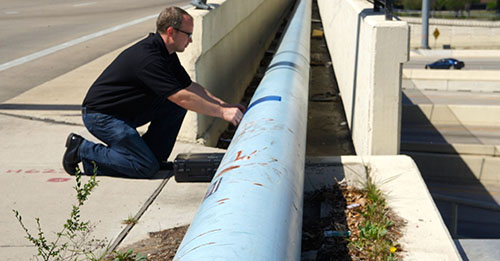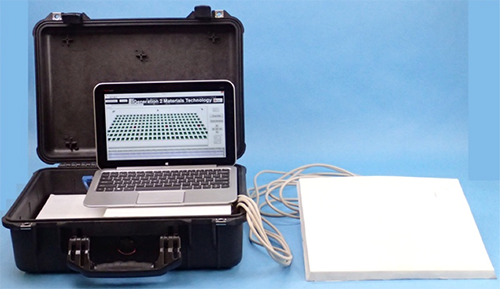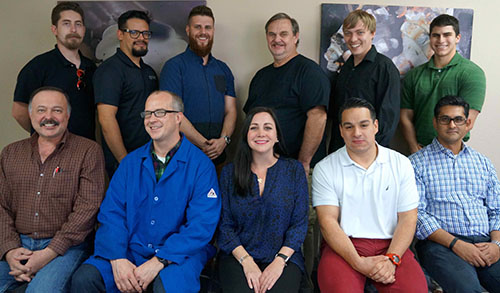SBIR-Funded Sensors Detect Pipeline Stresses Early, Mitigating Future Problems
Without traffic cones or construction crews snarling traffic, it can be easy to forget the vast network of pipelines, spanning hundreds of thousands of miles across the country, transporting the oil that heats our homes and gasoline that fuels our cars.
 Historically, managing the health of pipelines was mostly reactive; only physical appearances, like major deformations and stresses, provided hints to potential fractures or warping.
Historically, managing the health of pipelines was mostly reactive; only physical appearances, like major deformations and stresses, provided hints to potential fractures or warping.
In 2011, Houston-based Generation 2 Materials Technology, LLC (G2MT), produced an industry first with the release of its Small Business Innovation Research (SBIR)-funded non-destructive pipeline stress analysis sensor. These sensors are able to determine the through-thickness residual stresses of materials that are built to withstand pressure, which can reveal pipeline stressors before they are visible, and before they cause damage.
Administered by Volpe, the SBIR program helps entrepreneurs develop new and innovative solutions to complex transportation challenges, calling on the power of small businesses to help solve DOT’s most pressing needs.
 Through the SBIR program, the Pipeline and Hazardous Materials Safety Administration (PHMSA) awarded G2MT Phase I funding of $150,000 in June of 2011, which allowed for a proof of concept to be developed. G2MT was later chosen for an SBIR Phase II award of $1 million in 2012, granting the production of a sensor that was ready for both field deployment and commercialization. The award afforded G2MT founder Angelique Lasseigne the opportunity to hire new help as her company grew from 2 to 12 employees, and she’s about to hire more.
Through the SBIR program, the Pipeline and Hazardous Materials Safety Administration (PHMSA) awarded G2MT Phase I funding of $150,000 in June of 2011, which allowed for a proof of concept to be developed. G2MT was later chosen for an SBIR Phase II award of $1 million in 2012, granting the production of a sensor that was ready for both field deployment and commercialization. The award afforded G2MT founder Angelique Lasseigne the opportunity to hire new help as her company grew from 2 to 12 employees, and she’s about to hire more.
“Having the SBIR program behind us makes the major [companies] realize that we’re real, we’re serious, and we’re here to play,” said Lasseigne. “That made them give more to us: more samples and access. You can’t make these sensors if you don’t have access to the real thing.”
The breadth of G2MT’s influence has quickly grown to the point where the sensors can be used almost anywhere in the field. The sensors now have a role in the nuclear, aviation, and maritime industries, as well as in gauging the structural integrity of transportation infrastructure, such as bridges.
Working with SBIR has helped Lasseigne remain the owner of G2MT, as she is unrequired to sell her intellectual property or share the company with an investor. She owns and operates a second company, too, conducting failure analysis to help pay the overhead of G2MT.
“The SBIR program is going to be the future of giving opportunity to future generations,” Lasseigne said. “We need the opportunity to keep our intellectual property and the opportunity to lead our companies because you never know who will be the next Apple.”

The G2MT team: (Front row, left to right) Robert Schaffler, Joshua Jackson, Angelique Lasseigne, Chris Trejo, Baldo Martinez, (back row, left to right) Melvin Theriot, Victor Albarran, Jeff Mason, David Snow, Jeremy Swaby, and Anthony Nunez. (G2MT photo)
This article also appeared in U.S. DOT's Fast Lane blog.

